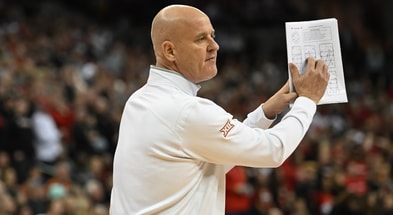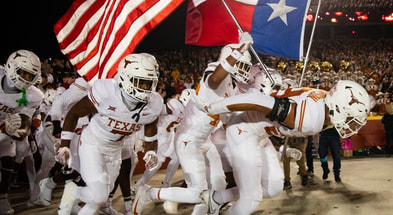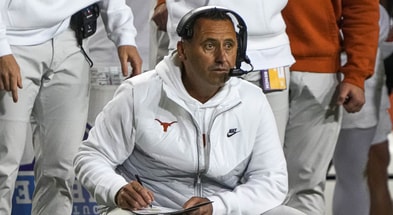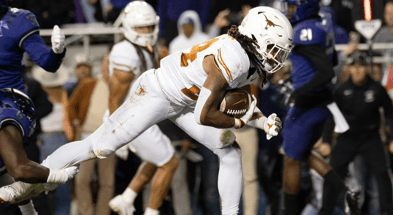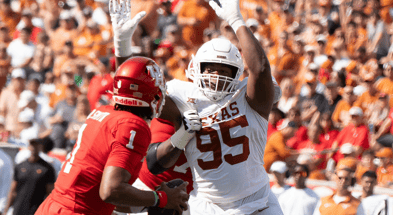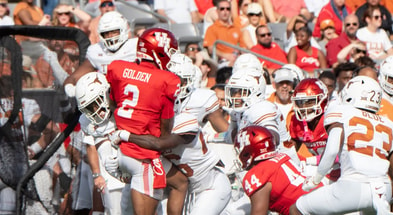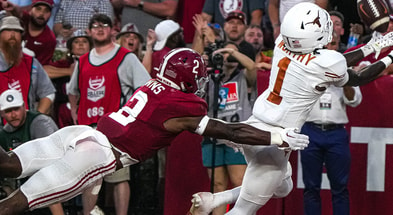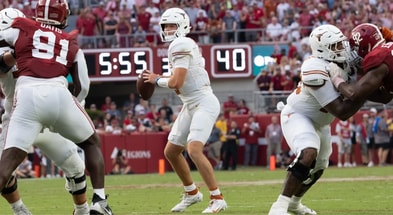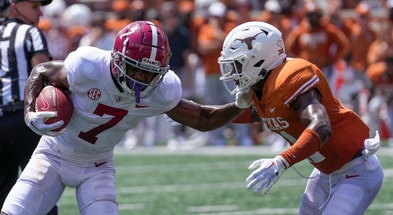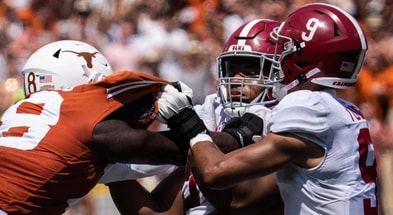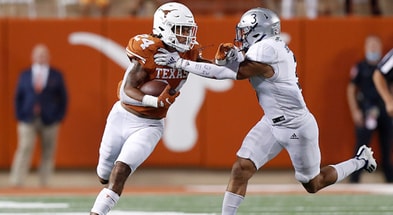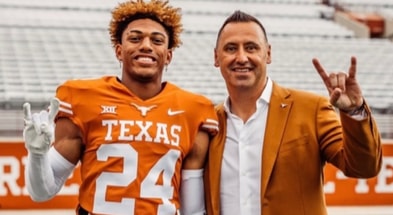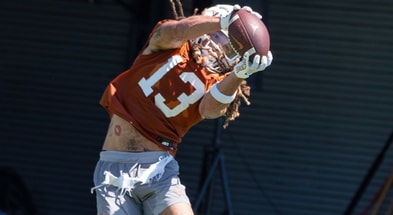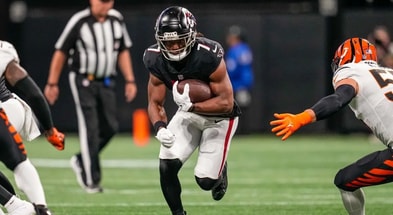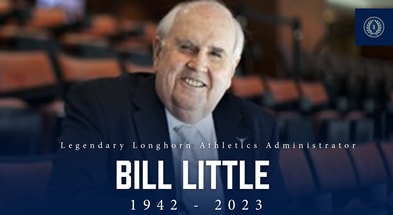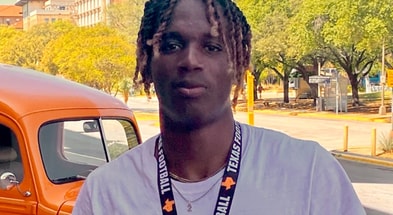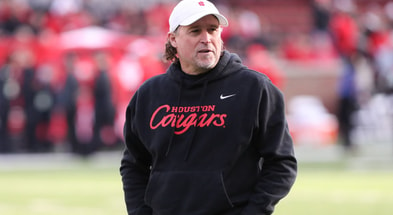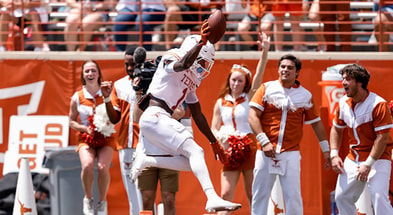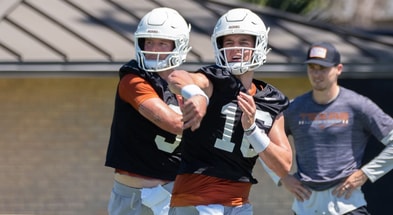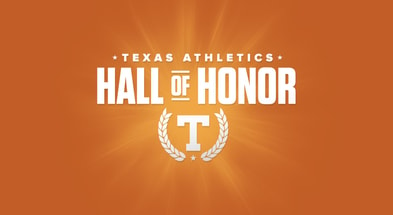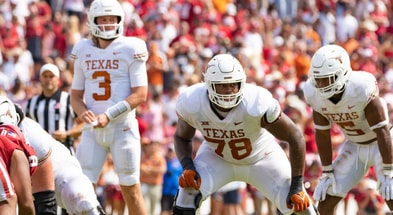Gameplan: The 5 most challenging players on Texas' schedule
Texas has a number of challenges on the 2021 schedule, starting with facing a highly experienced and winning Louisiana team with all new coaches, schemes, and quarterback. However, none of the individual players on the Ragin’ Cajuns are going to strike fear into Longhorn players conducting film study.
There are some players Texas will face this season who will be scary due to a combination of their own excellence or the way they match up against the Longhorn roster. A single great player in a lopsided matchup can create a domino effect on a game.
Here’s a list of some players Steve Sarkisian and his staff will need to carefully account for when trying to navigate the 2021 season. We’ll go in order of when they appear on the schedule.
Jalen Catalon, Arkansas safety
Arkansas experimented with the 3-deep safety “flyover defense” scheme last season and definitely found some positive results. This season they have more depth at cornerback and have been talking about using more 4-down fronts. Of course even in the 4-down you can still get the flyover effect with an over the top safety inserting against the run game.
I don’t know what they’re doing in coverage to the wide side of the field here, they seem to be highly exposed to a simple slant, but you can draw up coverages in a way to free up a rover safety in the middle of the field. The West Virginia defense often has a free-hitting safety in the middle of the field while playing 4-down with Cover 2. I expect Barry Odom to figure out how to get Catalon free.
The problem this presents to Texas is in their obvious preference to win by running the ball with Bijan Robinson. Texas is consequently going to need an answer for when the Hogs park Catalon in the middle of the field and allow him to hawk down against the run, unaccounted for by the blocking scheme.
The simplest solution would be to test the ability of their other defensive backs to hold up outside and vertically without him. Texas will test this early, but if they can’t punish the Hogs for devoting a safety to Bijan then Catalon could be a problem. A reasonably well blocked play can be minimized by a good middle safety who’s close enough to swoop down and make the tackle. If Texas can’t make big plays they may struggle to separate from the home team on the scoreboard.
Quentin Johnston, TCU outside receiver
This is really straightforward, Johnston is a huge athlete with great hands and speed and TCU is going to throw the ball at him when they get 1-on-1 coverage. Either Texas will need to be able to cover him 1-on-1, or they’ll need a way to get some help for the corner lined up against him without compromising their ability to stop the Frogs’ spread-option run game.
They’ll get Quentin Johnston early in the season, perhaps early enough he won’t have proven he’s worthy of a Cover 2 bracket, but if they wanted to try that approach they have corners who could help them execute the plan.
Here’s a Cover 2 look against the Frogs running their zone-read play with the option to throw a fade to Johnston if they get 1-on-1 coverage because the strong safety is playing the run.
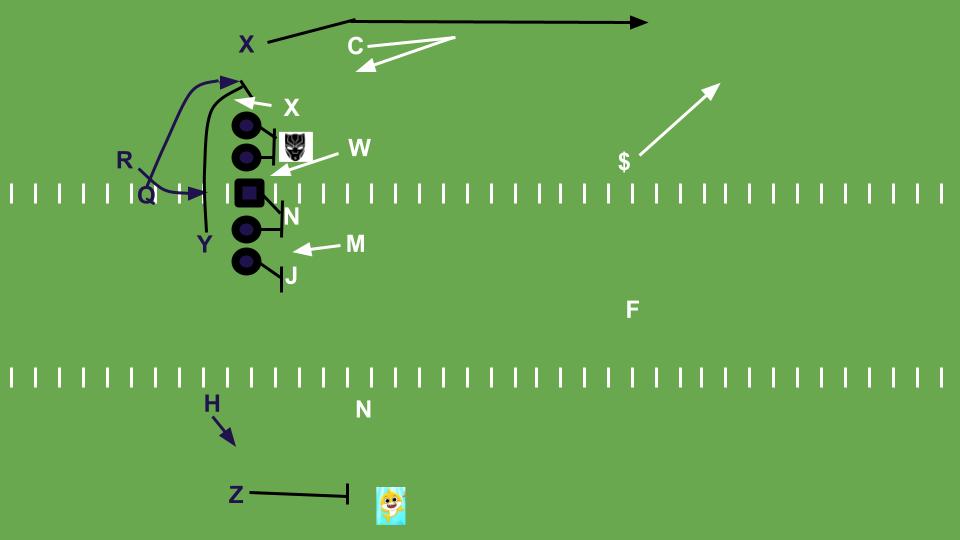
Pete Kwiatkowksi already prefers to have his edge defenders play the quarterback on read-option plays, forcing the ball inside for his defensive tackles and linebackers. So you don’t worry about Johnston, because he’s bracketed, you don’t worry about Max Duggan because the end is telling him to hand-off, you just need to be able to hold up inside against center Esteban Avila and running back Zach Evans.
TCU wants the chance to run the ball inside with Evans and their other running backs, but Texas may like those matchups. If the ball does spill out, your corner needs to be ready to arrive in run support from the perimeter. Additionally, if the Frogs look to throw to the other side of the field opposite Johnston the defensive backs there can’t count on the strong safety to roll and help them.
Marvin Mims, Oklahoma slot receiver
Mims was the best receiver at Oklahoma last year as a true freshman and I expect him to be their featured weapon when they want to get after teams inside this season. There’s a few ways they can do it, drag screens, slot fades, the dreaded leak patterns, seam benders, etc. I think we’ll see some of everything from Mims.
The biggest challenge for Texas is his positioning inside. Can Anthony Cook and the safeties run with him deep in Pete Kwiatkowski’s Match coverages?
Here’s a common play for Riley when he wants to attack the nickel with his most dangerous vertical threat.
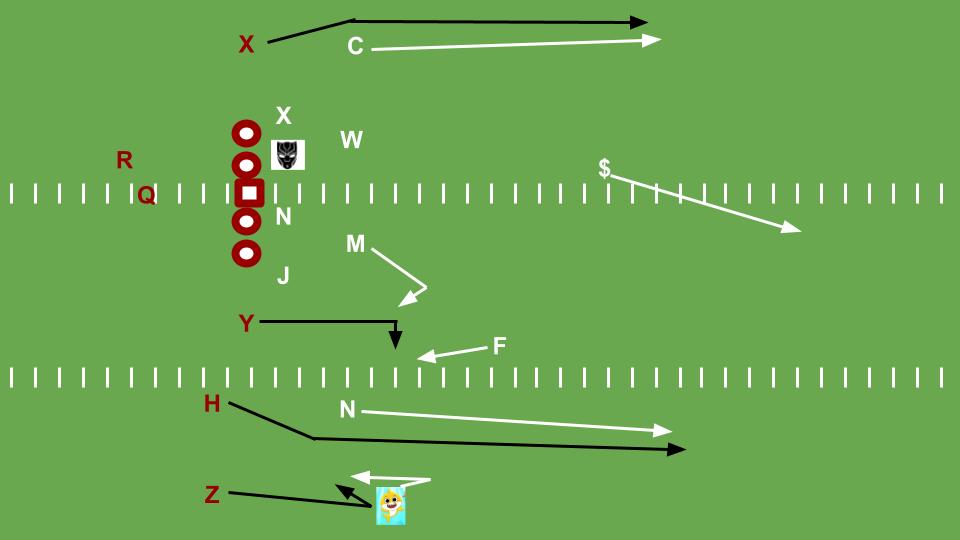
The Y is tight end Austin Stogner and he’s running a “stick” option route in the middle of the field. If you want to bracket it with a safety to help the Mike linebacker out then your nickel has to be ready to carry the slot up the field on a fade route which is probably going to take them both out of range for the deep safety. Is Anthony Cook up for turning and running with Marvin Mims (H)?
Texas could play more of a zone and have the corner try to carry the fade and use the nickel to help underneath.
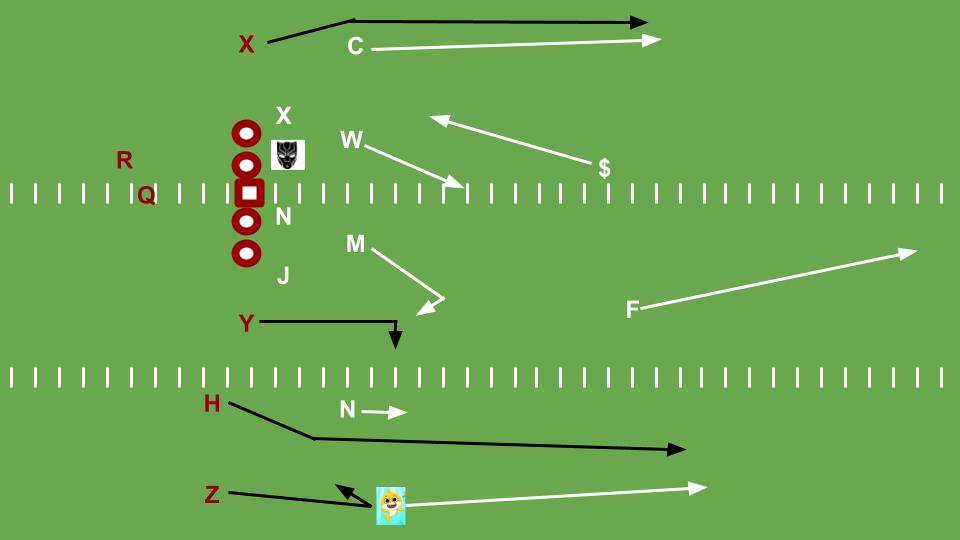
If Cook is smart and trustworthy, PK is the type of coordinator to encourage him to break on where Spencer Rattler looks and throws rather than just covering the hitch left open by D’Shawn Jamison running deep. But it’s still a tough assignment for the cornerback to stop that route outside-in.
Much of what Riley does well in the passing game at Oklahoma will be mitigated by Texas’ ability to get good drops at linebacker. He’ll still have the ability to isolate defenders wide and hunt 1-on-1 matchups for his top receiver.
Siaki Ika, Baylor nose tackle
I have a suspicion Jake Majors will prove to be much better when he’s no longer facing a rotation of nose tackles who are bigger and stronger than him. Normally being bigger and more powerful is a key advantage for the offensive lineman along with knowing what they’re doing before the ball is snapped. Against Keondre Coburn and T’Vondre Sweat the issue is complicated.
There aren’t a ton of massive nose tackles like Coburn on the schedule, although a few have emerged recently with Iowa State possibly sliding Eyioma Uwazurike there (6-foot-6, 320 pounds) and Arkansas promoting FCS transfer John Ridgeway (6-foot-6, 325 pounds). Siaki Ika is the most concerning guy on the list. The LSU transfer rejoined Dave Aranda at Baylor in spring and brings his 6-foot-4, 350-pound frame with him.
Last year Aranda had to manufacture ways for his defensive front to offer resistance from Over fronts. This year with Ika in the middle he’ll be able to deploy his preferred, 3-down tite front and rely on Ika’s ability to two-gap centers to stuff runs without having to overcommit his secondary. Here’s an example of how he’ll look to defend an inside zone RPO of the sort Steve Sarkisian likes to use.
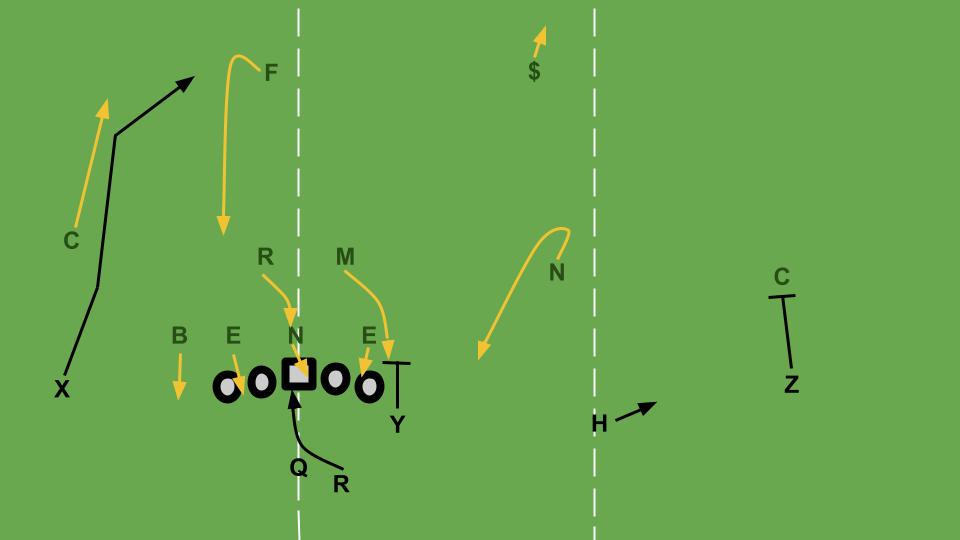
The nose is clouding the picture while the linebackers track the running back and fit into his path. Iowa transfer Dillon Doyle really picked it up last season as the year progressed and returning starter Terrel Bernard is among the best linebackers in the league. Playing them behind Ika in the nose rather than converted center Ryan Miller or 6-foot-1, 285-pound Josh Landry will be a big boost to the Bears.
What will Texas do about it? Flood didn’t need to worry when his own center was Landon Dickerson (6-foot-6, 325 pounds). He’ll have to double Ika and try to find other areas up front to attack.
Will McDonald IV, Iowa State edge
It’s possible Texas’ offensive tackles will be a team strength. Derek Kerstetter has never been the weakest link on a Texas O-line and played right tackle at a high level back in 2019. Christian Jones was often pretty bad in pass protection in 2020 but has a good deal of potential, was always on a long development curve, and has received positive reviews.
Despite those positives, the Big 12 presents an edge rushing gauntlet in 2021 and the most concerning individual player is Will McDonald of Iowa State.
We first saw McDonald in mop-up duties as a freshman in 2018, where he had terrifying burst off the edge combined with natural length and bend. But the Cyclones’ evolution to the 3-3-5, while obviously a great move for Iowa State, erased his natural role as a weakside end.
Before 2019 they worked to convert him into a Sam linebacker who would play in space on the far hash. This didn’t go particularly well and they ended up sliding inside linebacker Mike Rose out there, which went very well with Rose winning Big 12 Defensive Player of the Year in 2020. McDonald ended up finding a role later in 2019 as a third down pass-rusher and put up five sacks in the final three regular season games.
He continued in this role in 2020, playing behind JaQuan Bailey as their “Leo” rushing end (think Texas’ Jack linebacker position) and racking up 10.5 sacks.
Now he’s the full-time starter on the edge and has gained 15 pounds to play this year at 6-foot-4, 245 pounds. Will McDonald is a menace playing in front of the Cyclones’ drop eight schemes. If you have to help block him with a tight end or running back you lose something in the passing game trying to flood Iowa State’s zones. If you try and double him with a tackle and guard you’re at risk of getting beat elsewhere as the other Cyclone defensive lineman (and linebackers) are not scrubs.
Texas will need to be playing well at tackle by the time they head up to Ames, IA.
Photo by David Stacy/Icon Sportswire via Getty Images
